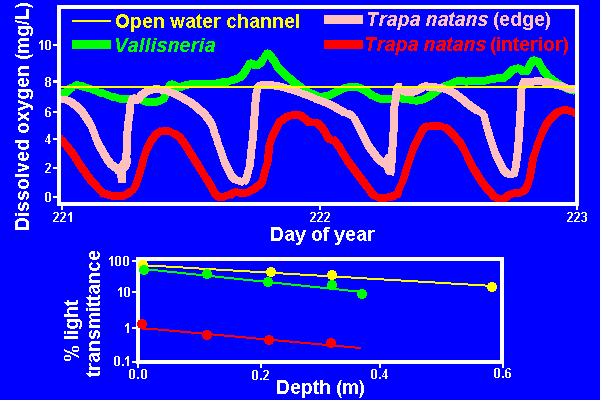 |
The Global Invasive Species Team |  |
|
|
|
Introduction First slide Slide #5 Slide #10 Slide #15 Slide #20 Slide #25 Slide #30 Slide #35 Slide #40 Slide #45 Slide #50 Slide #55 Slide #60 Slide #65 Slide #70 Last slide |

|
|||
| The above figures are redrawn from research
published by Caraco & Cole (2002) on water chestnut in the Hudson River.
Their research illustrated
that in comparison with open water areas (yellow line), or with
areas colonized by the native aquatic plant
Vallisneria americana (green line),
the presence of water chestnut sharply increased the frequency and
extent of low dissolved oxygen episodes, both near the edges
(pink line) and the interior (red line) of the water
chestnut infestation.
In fact, dissolved oxygen levels in the waters at the center of large infestations were
below that needed by many fish and invertebrate species up to 40% of the time.
Dissolved oxygen concentrations at the center of large
populations of Vallisneria never
dipped this low during the study. Similarly, light levels immediately below the water's surface were far lower in water chestnut beds than in areas occupied by Vallisneria. |
||||
| Slide 40 |
|
